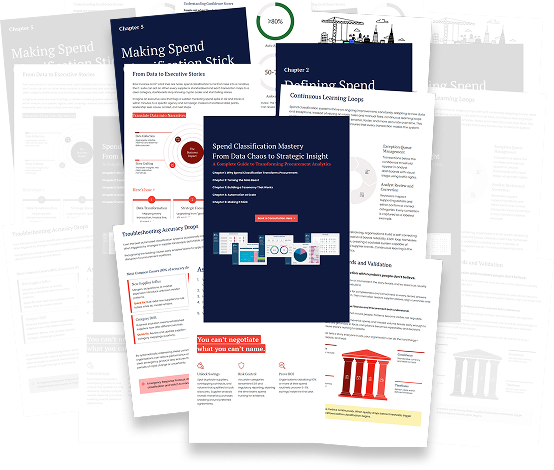No, procurement officers, it’s not your imagination. People are staring. All eyes are on you. Hellish 2020 may be over, but now it’s February 2021 and companies are desperately trying to identify areas of cost-saving opportunity while shoring up a teetering supply chain. It’s time to step into the breach.
Currently, most businesses are stuck in the awkward twilight zone of damage mitigation due to the pandemic while simultaneously planning for the next three years. Everyone is looking at procurement officers to assist their organisations in taking cost out of the business.
To do this effectively, you need to be able to answer four questions.
- What am I spending money on?
- Who am I spending money with?
- How do I better optimise my spend?
- What are my cost saving opportunities?
To answer these questions, a spend analysis needs to be conducted. It’s the only way to achieve clarity on where purchasing dollars are being spent. The benefits of this knowledge for your company are huge. Let’s take a look at three.
Your spend profile, bucketed
A place for everything and everything in its place. You’ve heard this before and it needs to be your mantra. If you want to take cost out of business and identify areas of opportunity (which, of course, you do because you’re in procurement), then you need to make sure all spend is being allocated to the correct bucket. If your spend categorisation isn’t in order, you have a cinder’s chance in snow of identifying opportunities for your organisation or putting a stop to unnecessary spend.
For example, employees are sent away on business or for conferences. Into which bucket do they log their expenses? Travel? Accommodation? Hotel? Chances are, two employees travelling for the same reason will allocate their spend in two separate places. Most companies have a cap on funds allocated to employee training. If expenses aren’t logged correctly, how do you know what is actually being spent in that category?
And if you think indirect spend is of minor concern, ponder this: since 2011, this area of expenditure has been growing by 7 per cent each year, globally. Why? Because organisations don’t give it the respect it deserves. And if they did, they’d first have to get their spend categorisation in order to address it.
A proper spend analysis will allocate spend to its correct bucket.
A place for everything, and everything in its place.
Fear, for lack of a better word, is good
The second major advantage of understanding your spend profile is compliance. Risk mitigation. Putting a little fear into people. A good spend analysis tool will uncover duplicate invoicing or – a concern for many businesses – order splitting.
Let’s say you have a company policy that stipulates all orders over the value of $50,000 must do a tender or request for quotation. To get around this, some will put through multiple orders under the $50,000 mark, slipping them under the radar. These policies are in place for good reason, and they need to be respected. A spend analysis will uncover the rule-breakers.
There aren’t many organisations with major supply chains that don’t blacklist vendors every now and again for various reasons. In the new normal, this will only occur with greater frequency as the pandemic highlights who can and who cannot be trusted. One of the more frustrating discoveries for organisations, though, is finding out that spend is still going to these vendors. A spend analysis will uncover these anomalies that would otherwise continue on unbeknownst, costing an organisation needlessly and opening them to unnecessary risk.
Know your spend profile, stop wasting time
Let’s be honest. We know a spend analysis is necessary. We know it’s good for us. Unfortunately, it’s like exercise; it takes time and effort that we usually don’t have but, without it, we’ll never become more efficient. Imagine, though, if you could outsource your exercise? You pay someone to run around the block and lift heavy objects while you sit at your desk, reaping the benefits.
That’s what Purchasing Index does. We specialise in spend analyses and data visualisation. Performing a spend analysis takes a lot of time without the proper tools and templates. We have over 30 years of experience in the field, which means our machine learning has 30 years of experience. It’s efficient and it’s best in class. We can perform a spend analysis in 10% of the time it takes an organisation to do it in-house.
And once you have a spend analysis completed, the time-saving benefits keep coming. How much time does the average company spend on monthly reporting? Four, five days? Our tools automate that process. Imagine gaining five working days in the month. Imagine not having to pay staff to work on a task a machine can complete in a fraction of the time.
Take advantage of our machine learning
If you’re part of an organisation that cuts back on sending staff to conferences or cancels the end-of-year bash, it’s a good indication that you don’t have a firm grasp on your spend profile. We get it. Things aren’t easy at the moment. Supply chain vulnerability has never been higher. Or, should we say, awareness of supply chain vulnerability has never been higher. But that’s exactly why a spend analysis has never been more vital than right now.
To achieve crystal-clear vision on where the purchasing dollars are being spent, get in touch with Purchasing Index today and take advantage of artificial intelligence and machine learning that’s had 30 years to evolve and hone itself. It’s time you knew what’s really going on in your company.









